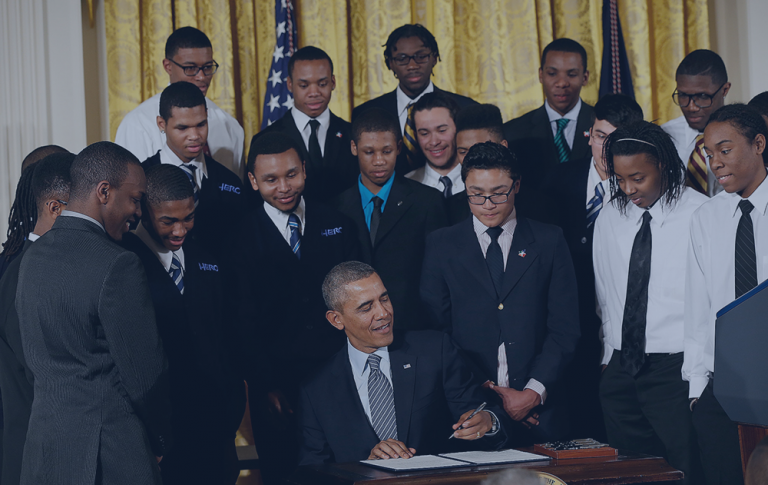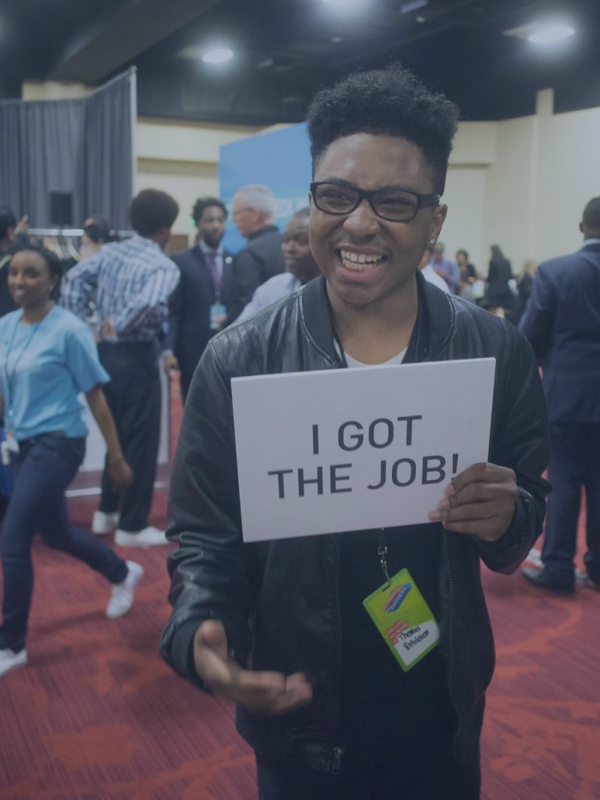My Brother’s Keeper
The My Brother’s Keeper (MBK) Challenge was launched by former President Obama in February 2014. The President called upon cities, counties, and tribal governments to make a commitment to improving outcomes for boys and young men of color. The MBK Challenge outlines six goal areas to increase education, employment, and safety. The six MBK goals are:
- Ensuring all children enter school cognitively, physically, socially and emotionally ready;
- Ensuring all children read at grade level by third grade;
- Ensuring all youth graduate from high school;
- Ensuring all youth complete post-secondary education or training;
- Ensuring all youth out of school are employed; and
- Ensuring all youth remain safe from violent crime and receive a second chance.
To sustain and grow the efforts begun under the MBK Challenge, the My Brother’s Keeper Alliance was created in 2015. The MBK Alliance partners with MBK jurisdictions across the country to address obstacles facing boys of color, provides grants to programs for disadvantaged youth and helps communities aid their populations.

L.A. County Efforts

Responding to the former President’s call for action to improve the conditions of boys and young men of color, the Board of Supervisors passed a motion on April 14, 2015, to accept the President’s MBK Challenge. The Chief Executive Officer sent a letter to the White House on April 16, 2015, to notify them that the County of Los Angeles accepted the MBK Challenge. In the letter, the County affirmed its commitment to implementing strategies aimed at ensuring that a greater number of boys and young men of color are positioned to succeed. The County also agreed to hold an Action Summit (Summit) to develop actionable recommendations to help eliminate opportunity gaps and barriers facing youth in the County.
- The County hosted the MBK Summit on September 10, 2015, at The California Endowment and over 150 stakeholders attended the day-long event
- Recommendations were developed through the Summit and were presented to the Board of Supervisors in a report on October 27, 2015
- The Los Angeles County Board of Supervisors adopted the recommendations on November 1, 2016
- Letter to President Obama expressing support for My Brother’s Keeper initiative on April 15, 2015
- Progress Report On Implementation Of The County’s My Brother’s Keeper Community Challenge June 1, 2017
- Recommendations Regarding Youth Diversion Program Expansion And Funding Of Countywide Infrastructure (January 24, 2017)
Cities
Five cities and one school district have accepted the MBK Challenge and are in varying stages of developing local efforts to improve outcomes for boys and men of color. The cities and school district are located below:
- City of Culver City
- City of Compton
- City of Hawthorne
- Inglewood School Board
- City of Long Beach
- City of Los Angeles

L.A. County MBK Initiatives
The County of Los Angeles has embraced a set of recommendations intended to impact all six MBK Goal areas. Below is a list of strategies that the County has begun implementing. Additional strategies will be developed and identified as the MBK Initiative progresses. The County’s initial set of recommendations are noted below.
The Chandler Life Course model is the County’s implementation framework for improving outcomes for boys and young men of color. It calls for an approach that is holistic, comprehensive and intergenerational to address the entrenched negative outcomes that too often characterize the lives of boys and young men of color.
An annual summit will be convened that provides an opportunity for regional stakeholders to gather and work collaboratively on efforts that support positive outcomes for boys and young men of color.
Increase opportunities for boys and men to access services by locating those services at non-traditional neighborhood sites.
Reduce disproportionate contact in the juvenile justice system for boys and young men of color by developing strategies that impact all nine points of engagement:
- Arrest
- Referral to Court
- Diversion
- Case petitioned
- Secure detention
- Delinquency finding
- Probation
- Confinement in a secure correctional facility
- Case transferred, certified, and waived to adult criminal court
Develop and align mentoring and career exposure programs that provide greater guidance and career supports to boys and young men of color.
Partner with LACOE to identify strategies that can be implemented by school districts that support boy and young men of color by addressing their marginal educational achievements and disproportionate rates of expulsions and suspensions.
Develop strategies that decrease employment barriers faced by youth of color to County positions.
Opportunities
The County of Los Angeles is very interested in maintaining a creative and diverse workforce, and in assisting boys and young men with opportunities for career exploration and exposure. Below are listings of opportunities for youth interested in learning more about careers and employment opportunities in the County.
Los Angeles County Public Safety Career Youth Program 7-11-17

